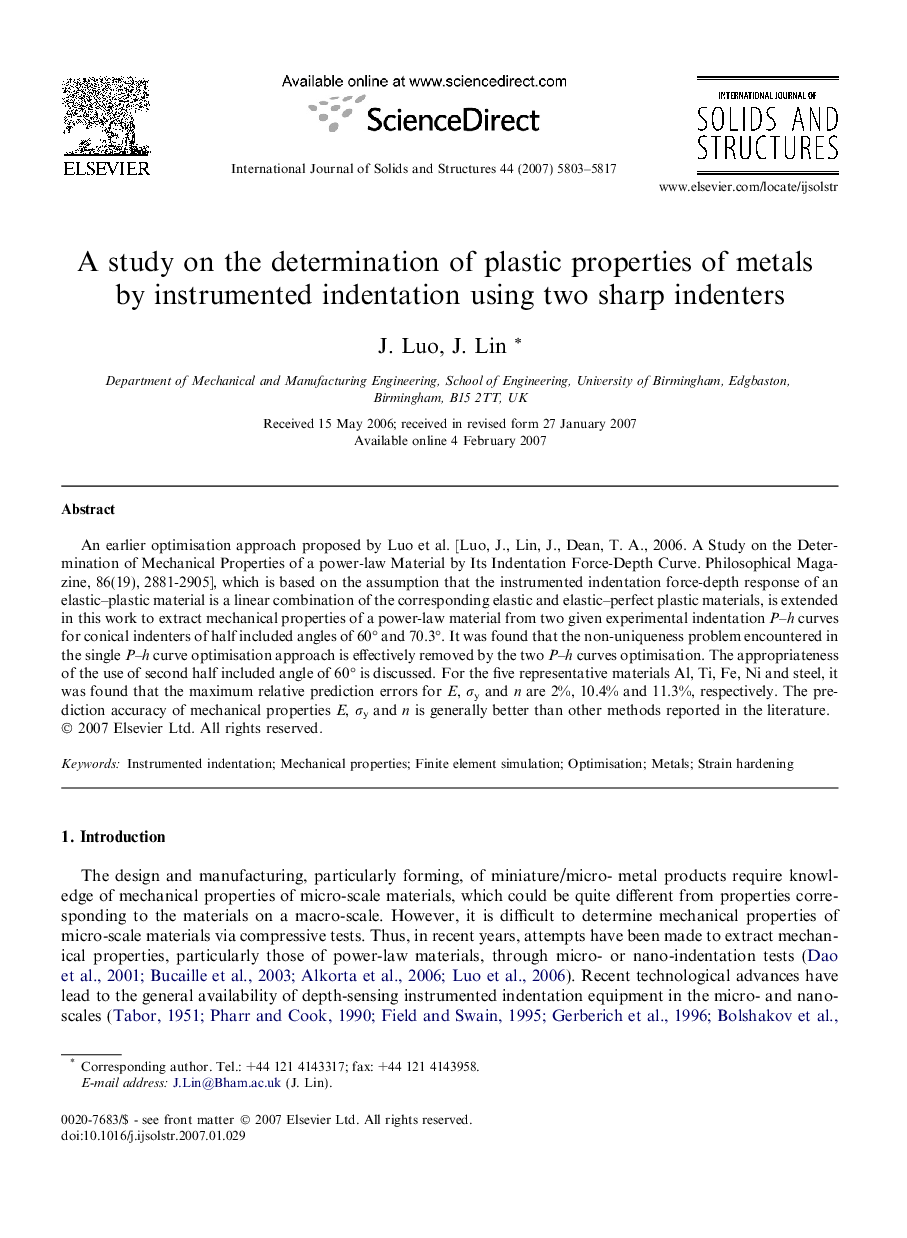| Article ID | Journal | Published Year | Pages | File Type |
|---|---|---|---|---|
| 279353 | International Journal of Solids and Structures | 2007 | 15 Pages |
An earlier optimisation approach proposed by Luo et al. [Luo, J., Lin, J., Dean, T. A., 2006. A Study on the Determination of Mechanical Properties of a power-law Material by Its Indentation Force-Depth Curve. Philosophical Magazine, 86(19), 2881-2905], which is based on the assumption that the instrumented indentation force-depth response of an elastic–plastic material is a linear combination of the corresponding elastic and elastic–perfect plastic materials, is extended in this work to extract mechanical properties of a power-law material from two given experimental indentation P–h curves for conical indenters of half included angles of 60° and 70.3°. It was found that the non-uniqueness problem encountered in the single P–h curve optimisation approach is effectively removed by the two P–h curves optimisation. The appropriateness of the use of second half included angle of 60° is discussed. For the five representative materials Al, Ti, Fe, Ni and steel, it was found that the maximum relative prediction errors for E, σy and n are 2%, 10.4% and 11.3%, respectively. The prediction accuracy of mechanical properties E, σy and n is generally better than other methods reported in the literature.
